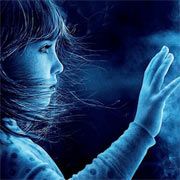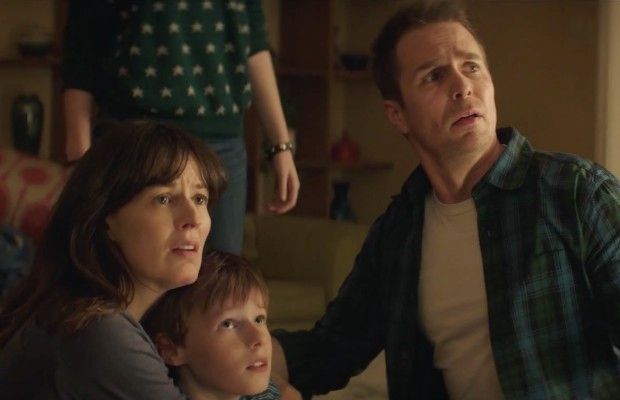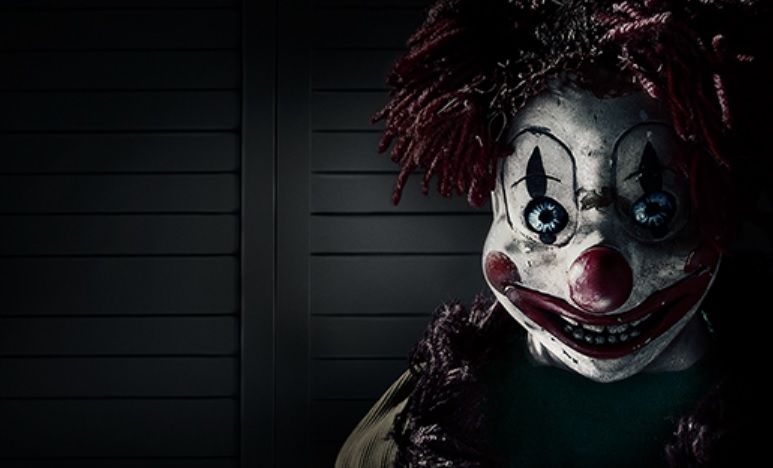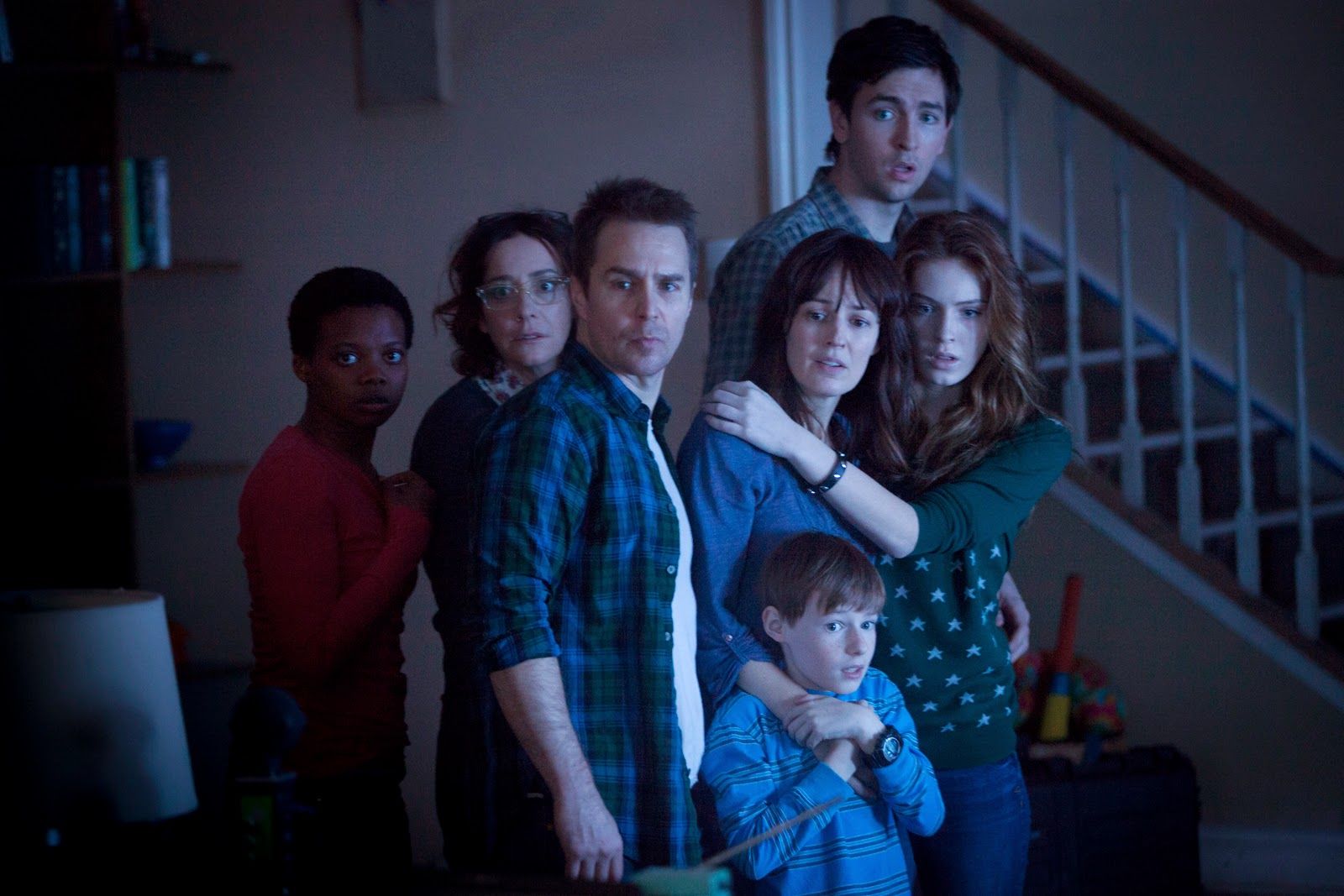Everything old in Hollywood is new again, the most recent example of which is the remake of 1982's supernatural thriller "Poltergeist," which haunts theaters nationwide today.
In the modern take on the horror classic, the financially strapped Bowen family relocates from the big city to the suburbs. However, their new, idyllic existence is quickly disrupted in a big way. After some spooky signs and things going bump in the night, they soon discover that their fixer-upper house is also the home to malevolent spirits determined to rip them apart.
SPINOFF ONLINE connected with "Poltergeist" director Gil Kenan to discuss the art of building a better remake. We spoke about expanding on the spirit world and re-imagining the original film's iconic scenes. Kenan explained how he convinced Sam Rockwell to come on board, and how, despite the controversial PG-13 rating, he's confident in his film's ability to terrify audiences.
Spinoff Online: What do you believe makes a good remake? What do moviegoers want to see?
Gil Kenan: You go into the theater and you're looking for the same thing we all look for, which is a connection to a group of human characters, or non-human characters, and a transportation to a world that's either a reflection of our own or another one that is compelling and exciting. Then, a story, some sort of drama that excites us, entertains us or scares us.
Really, that's the job of any film. That's the key. If you're going to distill something from an original film that you are going to retell, you have to be honest about what it is that made that story work. What made it work for the time in which it was made? What are the essential elements that animate that story, and take it from there. Then it's sort of a blank canvas on how far to diverge or reinvent where you can explore between the lines of what has already been told and what has been left.
What was it about the original "Poltergeist" that made it an instant horror classic?
Almost everything works about the original "Poltergeist." The most important element is the human arc. That family is so well drawn out. It was a family unlike any in most horror films up until that point. For a great part of the running time of that film, they live, breathe and joke like a family in any other kind of film. That relatability, that grounding of them and the accessibility were also very disarming. They didn't make you feel like you were watching something that would take a turn. That openness primed you as an audience for a much more harrowing ride.
Can you talk about your take on "Poltergeist?" What were some of your goals in putting together this version?
The most immediate one was one that screenwriter David Lindsay-Abaire actually began in his draft. It was one of the sparks that I picked up on that got me excited. It was a re-evaluation of the suburbs as this ideal. You can't genuinely say moving to the suburbs is the hope of every young working family. Nowadays, we strive to stay as close to the city center as possible. We've seismic-shifted in the importance of urban centers in the world. The 1980s were very defined by this push to create a middle-class haven in the suburbs. The films of the 1980s worked really hard to poke holes in that dream. David smartly took a pulse of the modern family and realized that although a setting is critical and hardwired to the DNA of what a "Poltergeist" film should be, there was room for a dramatic rejiggering of the family that is placed there. It created a really interesting dynamic, because our family is downgrading into this house, into this neighborhood. They tried the city and failed. So when we meet them, they are resetting their expectations. It places them in a really interesting emotional place. It's another way of approaching that grounding and accessibility that we were excited by in the first "Poltergeist," but in a way that I found honest and really interesting as a product of the suburbs myself. That was one of the initial sparks.
There was also an importance on a character in the film that was more of a secondary player in the original films, although he got one of the best scenes in the second "Poltergeist." It was the boy in the family, the middle child. There was an opportunity to give him a critical voice in the telling of the story, both as an observer of this new home and to more fully explore his relationship with his sister that is abducted and then put him in a really interesting position when it's time to rescue her.
In what ways are you exploring the supernatural "other side" in this film?
That's the third point, and one of the pieces of the "Poltergeist" puzzle that was the most tantalizing to me, and the least explored. I think it was really wisely handled in the 1982 film, to be something behind the curtain. Although, if you go back to the entire franchise, it almost builds to a climax in the alternate dimension on the other side. It was always a tantalizing concept. Then, in later films, there's a sequence in "Poltergeist 2" that peeks into it. I think there's a little bit in "3," as well. It always felt to me that they were working really hard to keep it a mystical place. I was really interested in seeing the opposite side that was made up of the kind of fermented souls of those who couldn't cross over, who have been stuck for generations in this land in between and to see how their energies would fuse with the material and the house that they left behind.
There's a lot of nostalgia associated with "Poltergeist." How challenging was it paying homage to the original while bringing something fresh to the table?
The best way to pay homage is by making a good movie. All the Easter eggs, winks and nods in the world wouldn't amount to much if you didn't put the work into casting the film with incredible talent and doing the basic work of telling the story well. Beyond that, there are just moments that, as a fan myself, I would have felt underserved if they didn't end up on the screen. There has to be a reckoning amongst ourselves of, "What are the scenes that had to make it on screen?" Then, "Where can we push further? Where can we be inspired by feelings and moods and atmosphere from the original film, but create our own moments?"
Let's talk about one of them. That creepy little clown is front and center on the poster. How did you approach that scene and make it your own?
First of all, with a reality check. The first "Poltergeist" made clowns the least-desirable toys in consumer goods. I think it put the clown business out of business. David conceived of a really fun moment. I don't want to spoil it too much. It's sort of hardwired to the past. We don't do some cheat where this little girl just happens to have this creepy clown sitting on her bookshelf. It's more connected to the past of the house than just some convenience of the filmmakers. Beyond that, the clown had to have a personality that could give it its own lease on life. For me, that very quickly came in the form of its pull-string nose. It seemed to open up a world of sound and scratchy recording and tracking red-ball gags that got me really excited.
Sam Rockwell hasn't done a lot in the horror genre. Was it a hard sell getting him to sign on board?
Absolutely. I had to wage the war of a lifetime to get him on board. Sam, like most of our cast, is a very serious actor. The process of getting him on board required several sessions. For me, as a developing filmmaker, since this is only my third film, to be able to lock myself into a hotel room with Sam and our screenwriter for a couple of weekend sessions -- where all we did was read through and talk through and act through every beat of the film, to know we were on the same page dramatically and the character was activated -- all of that was really important. I felt like it gave that character a big leap forward. It goes to Sam's commitment as an actor and his care in choosing the roles that he does.
Some people are concerned about the PG-13 rating. How scary is this movie?
It's really scary, but it's also strange to me that people are concerned about that with a "Poltergeist" film. "Poltergeist" was strangely part of the process that led to the PG-13 ratings being established, even though there are moments in the original that people would question, like the face peeling. This film is super-scary. That's the tone and feeling that I set out to make here. The film, while truly scary, I think it has to be PG-13. I want this to be a movie that becomes the first terrifying memory of a younger audience and still works for a seasoned adult genre audience.
I grew up watching all kinds of horror. We all go through those stages where we become obsessed with gore. I had my own flirtations with special effects horror makeup and bleeding stumps. There's absolutely an art form there, and a time and a place for it, but I don't think it's in a "Poltergeist" film. I set out to make the scariest, most-human, most- thrilling experience I could for the audience. We never had to do any wrangling to get the rating. The first cuts I turned in were calibrated to be where it was. We got the rating and moved on.
"Poltergeist" spawned a few sequels. How interested would you be in returning to tell the next chapter?
I'm catching my breath. I just finished this one. I'm really proud of it. I'm super-excited about it. I love my cast. I would love to work with this group again. Having said that, I just want this thing to get out and for fans to enjoy it and feel like the movie was made for them with love and all the care and respect in the world.




